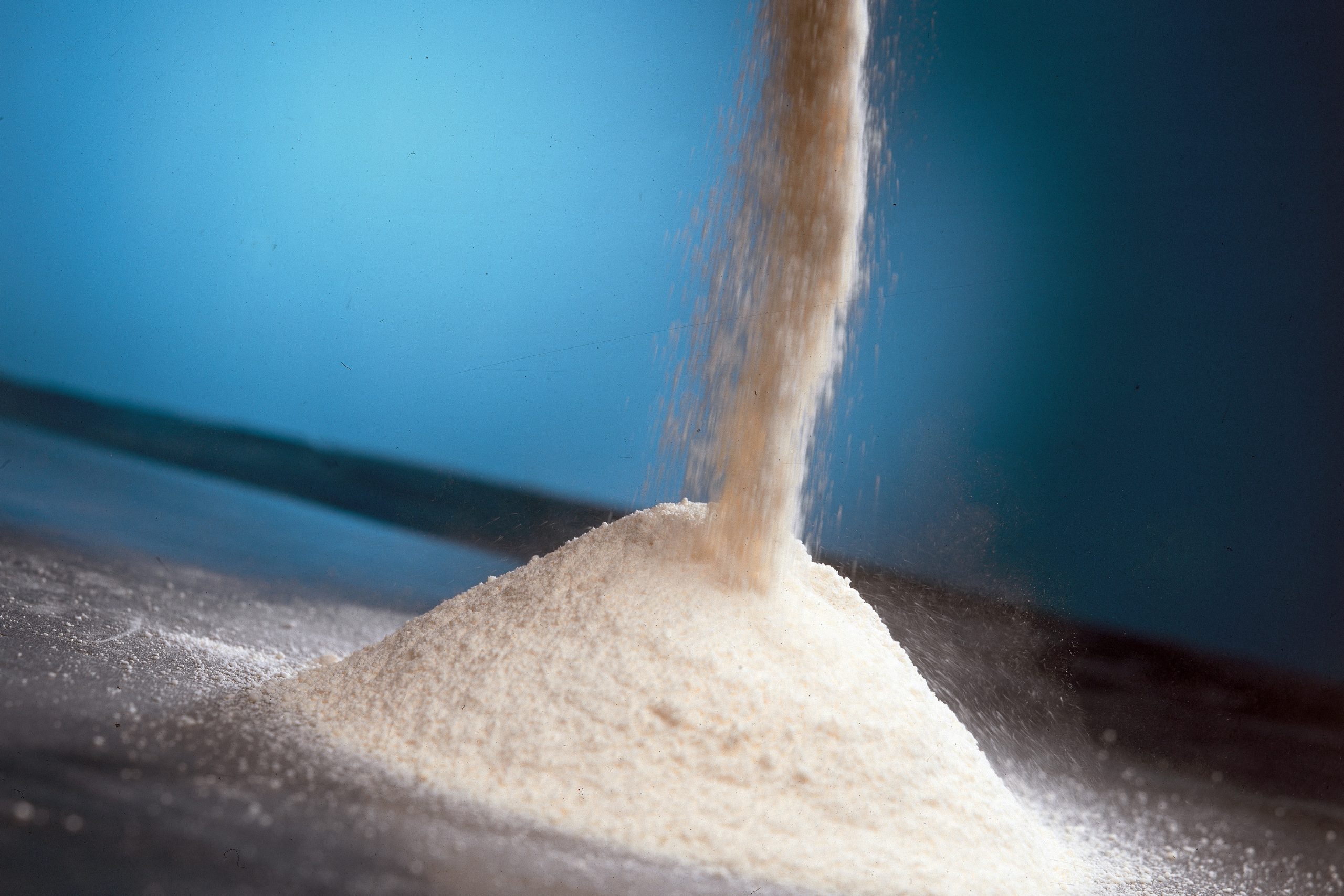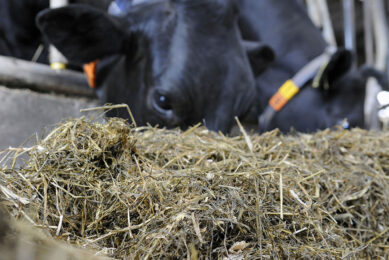Dosing and mixing: Accuracy counts

Accurate dosing of feed additives is the first step to achieve the required feed specification. Extra care should be taken when dosing liquids, as inaccuracy may cause problems in the mixer. In this article we explain how this can be done.
Dosing accuracy has become an important topic because of the need to comply with today’s high quality standards in feed production. Dosing influences the homogeneity of the mix which in turn determines quality parameters of the feed. The degree of homogeneity that can be achieved with liquid and solid additives depends partly on the absolute amount dosed.
The smaller this amount is, the more performance is required from the mixer. Dosing errors are also important; typical dosing errors range from ± 0.02 – 0.05 kg for dry products and ± 0.1 – 0.2 kg for liquids. While gravimetric dosing (manual or automatic) is standard for dry micro-ingredients, volumetric or gravimetric dosing systems in combination with spraying systems are both very common to bring liquid additives and ingredients into the batch mixer. Volumetric metering devices for liquids are sensitive to temperature and viscosity; these factors can introduce unwanted accuracy fluctuations as large as 5 %. But even accuracy of gravimetric dosing systems for liquids have their limitations in the dusty and rough environment of a feed mill. Due to design, specific layout and operating conditions especially with low dose rates, repeatability and accuracy are far below specification values.
Liquid spraying increases particle size
Liquid addition always causes micro-agglomeration or clustering by binding small sized particles to larger particles. This is illustrated in Figure 1: particle d versus particle D. Viscous liquids sprayed on powders create bonds between neighbouring solid particles, preventing their free movement and consequently proper mixing. This is most problematic at the beginning of the mixing cycle when raw materials, and in particular additives, are completely segregated and the mixing action is required most.
Improving homogeneity
To overcome problems of aggregation it is common practice to introduce a dry mixing time at the beginning of the mixing cycle, during which solids can start being mixed without liquid addition interfering. Adding oil or fat at dose rates of approximately 1% at the end of the mixing process has the benefit of stabilising the mixture, thus preventing de-mixing of the mash in the conveying lines between the mixer and the pellet mill. But when spraying micro-ingredients at relatively low dose rates of approximately 0.1–0.3%, the increase of spray particle size of the additive compromises the mixing of these micro-ingredients with the main mash particles. Addition of dry micro-ingredients into the hopper before the mixer generally has a positive effect on homogeneity, especially if added as a ‘sandwich’ between two major or main ingredients. When dumping main and micro- ingredients from the hopper into the mixer, a pre-mixing takes place and even untimely spraying of liquids will have a less pronounced effect on the homogeneity of these ingredients.
Avoid high levels of liquid addition
The batch mixer in some feed mills is used to add a variety of liquids, such as oil, fat, choline chloride and liquid analogues of amino acids. In some cases we found that the combined addition rate of all liquids exceeded 5% of the total mix. The batch mixers in feed mills are generally not designed to incorporate such levels of liquids into the mash – the mixing performance of a standard double ribbon or paddle mixer is not adequate. Another aspect to consider is the limited capacity of the mash to absorb these liquids. Depending on the properties of the main and minor ingredients, adherences in the mixer and in the conveying lines can be caused by overly high dose rates of liquids due to insufficient absorption.
Figure 1 – Clustering of liquids, dry main ingredients and feed additives.

Parallel addition may cause lumping
The parallel addition of several liquids poses further problems to the equipment design. The optimum position for the spraying nozzles in the mixers is in many cases restricted by hoppers and gates for main, minor and micro-ingredients. We have seen examples of several liquids spraying parallel to the same area in the mixer. This results in a high amount of liquids in certain parts of the mash. Lumps are formed which will have a much higher concentration of liquid additives than the rest of the mash, and feed quality will deteriorate.
Author:
Detlef Bunzel, Evonik Nutrition & Care, Germany
Join 26,000+ subscribers
Subscribe to our newsletter to stay updated about all the need-to-know content in the feed sector, three times a week. Beheer
Beheer









 WP Admin
WP Admin  Bewerk bericht
Bewerk bericht